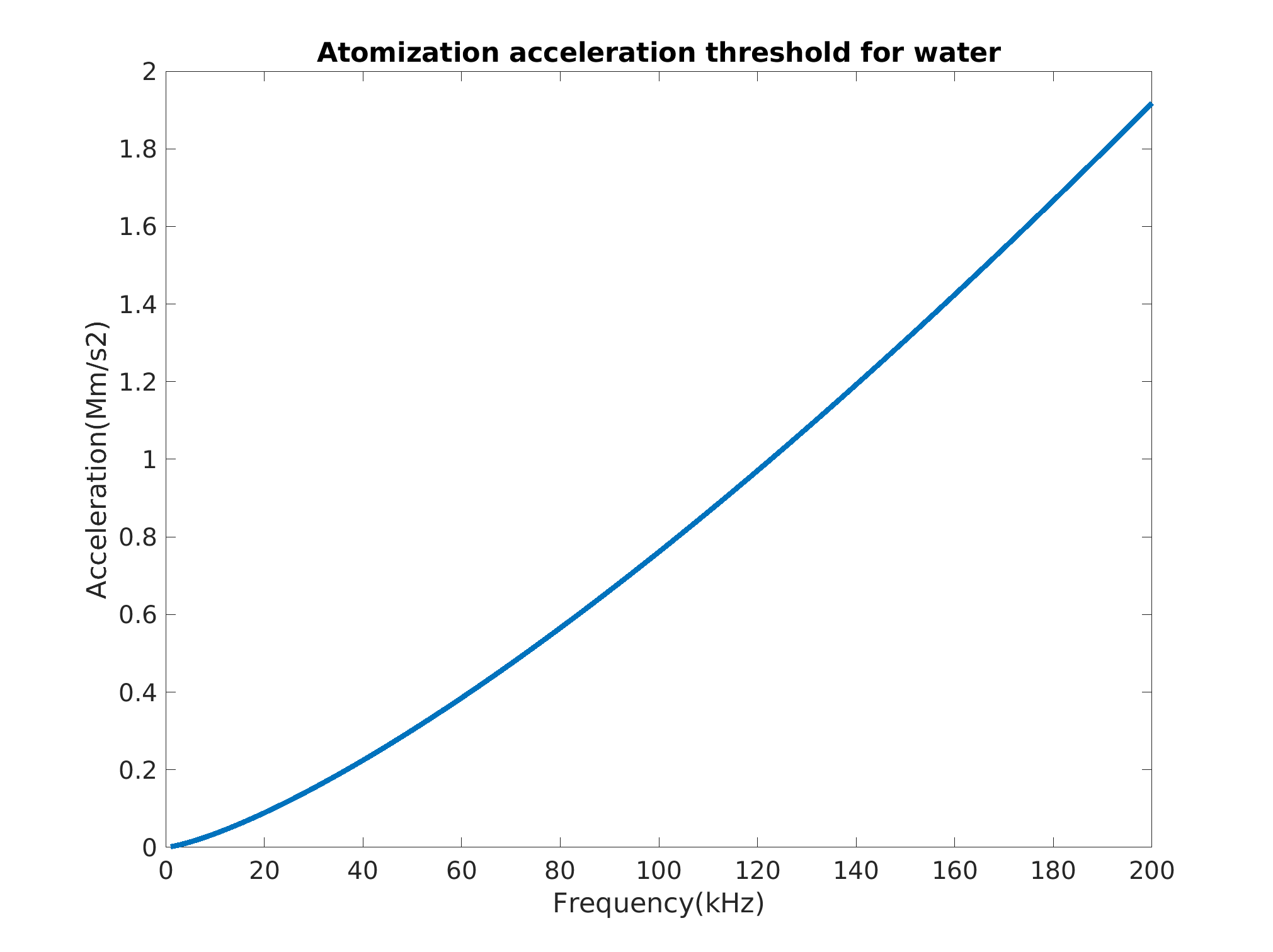SLAAEK6 June 2024 ULC1001 , ULC1001-Q1
3.1 Critical Acceleration
Ultrasonic lens cleaning utilizes the vibration of the lens to expel the water droplets on the lens. To atomize the water droplets, the acceleration needs to be above a threshold. The threshold can be estimated by the following equation:
Where is the critical acceleration —the minimum acceleration at which droplets are ejected from a driven surface, Mm/s2 or 106 m/s2
= 72 x 10-3 N/m, the surface tension of water
= 1000 kg/m3, the density of water
is the angular frequency, krad/s
Figure 3-1 plots the critical acceleration versus frequency. A low frequency requires a low acceleration to expel the water. Therefore, designing a system that works at a relatively low frequency (20kHz - 100kHz) is preferred . For any LCS design, the goal is to create a design whose lens surface acceleration level is higher than the threshold.
 Figure 3-1 The critical acceleration to
atomize water versus frequency
Figure 3-1 The critical acceleration to
atomize water versus frequencyThe critical acceleration in the equation is only for water. Sticky materials such as oil and mud can have higher critical accelerations.